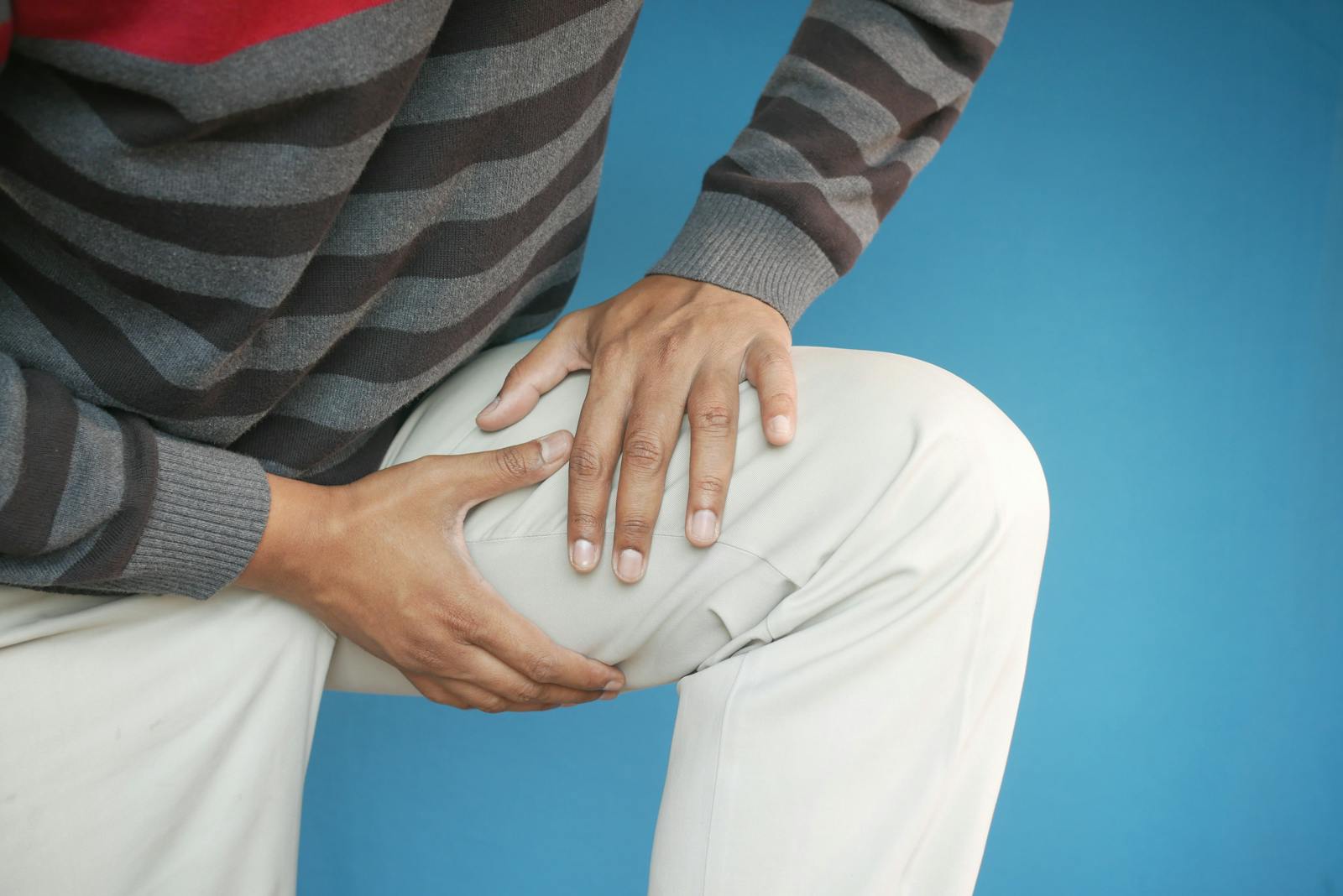Leg and foot pain, a common complaint among many, can be a symptom of various underlying health conditions. The intricate network of bones, muscles, tendons, and nerves in our feet and legs often complicates the diagnosis, making it essential to understand the nature of the pain and its potential causes. Whether it’s a throbbing ache, a sharp sting, or an unsettling numbness, the type of pain often provides critical clues to its origin. Join us as we explore the labyrinth of leg and foot pain, its causes, and possible remedies – a journey towards finding relief and regaining mobility.
Understanding Leg and Foot Pain
To understand leg and foot pain, it is vital to explore the intricate anatomy of these structures, examining the myriad of potential root causes, ranging from musculoskeletal disorders to systemic diseases. The legs and feet are complex systems of bones, joints, muscles, tendons, and nerves, each susceptible to injury, strain, or disease, which can result in pain.
Pain management techniques prove pivotal in addressing leg and foot pain. These encompass a range of medical and therapeutic strategies, such as medications, physical therapy, and in severe cases, surgical intervention. The choice of technique is often influenced by the severity, duration of pain and the underlying cause, which is why a thorough medical examination and diagnosis are essential.
The psychological impact of chronic leg and foot pain should not be underestimated. Constant pain can greatly impair a person’s daily activities, leading to frustration, anxiety, and depression. In many cases, psychological therapy, such as cognitive-behavioral therapy, can be beneficial in helping patients cope with the emotional stress associated with chronic pain, further underlining the interconnected nature of physical and mental health in pain management.
Common Causes of Pain
The subsequent discourse will elucidate the common sources of leg and foot pain, employing a detailed, analytical approach rooted in medical knowledge. Our examination will span a variety of potential triggers, from acute injuries to chronic conditions. Additionally, the impact of lifestyle choices on leg and foot discomfort will be critically analyzed, underscoring the importance of preventive measures in maintaining lower limb health.
Identifying Pain Sources
Understanding the root cause of leg and foot pain necessitates a thorough examination of the common sources, which can range from everyday strains to serious medical conditions. One must consider aspects like pain psychology, acknowledging that the perception of pain is influenced by our emotional state. For example, stress or depression can intensify one’s sensitivity to pain. Conversely, this pain can have an emotional impact, leading to feelings of frustration or anxiety. Neurological conditions, musculoskeletal issues, or systemic diseases such as diabetes or arteriosclerosis are also common culprits. These can cause symptoms like numbness, tingling, or aching in legs and feet. Understanding the source of the pain is the first step in developing effective treatment strategies.
Impact of Lifestyle Choices
Moving beyond medical conditions, lifestyle choices also play a significant role in the manifestation of leg and foot pain, warranting an exploration into common behaviors that could potentially induce or exacerbate discomfort. Sedentary behavior, for example, can lead to muscle atrophy and a decline in bone density, both of which can trigger pain in the lower extremities. Additionally, nutritional influences are critical. A diet deficient in essential nutrients such as calcium and vitamin D can weaken bones, contributing to conditions like osteoporosis and associated pain. Conversely, excessive intake of inflammatory foods can exacerbate pain symptoms. Hence, adopting a balanced diet and regular physical activity are fundamental in mitigating the risk of leg and foot pain.
Recognizing Different Pain Types
Identifying the specific nature of leg and foot pain requires a vital understanding of the distinct characteristics associated with different pain types. Recognizing these differences is essential for the application of appropriate pain management techniques and for mitigating the psychological impact of pain.
- Acute Pain: Typically sharp and sudden, acute pain often signals injury. It is usually localized and can be traced to specific incidents like sprains or fractures.
- Chronic Pain: This long-term pain can range from mild to severe. It may persist for months or even years, often due to conditions like arthritis or neuropathy.
- Neuropathic Pain: Caused by damage to the nervous system, neuropathic pain often presents as a burning or shooting sensation. It is commonly associated with conditions like diabetes.
- Psychogenic Pain: This type of pain has psychological origins. It may manifest physically, but is often exacerbated by emotional or mental factors.
Understanding these pain types can guide the choice of treatment strategies. However, it’s important to remember that pain is a subjective experience and can vary greatly between individuals. Therefore, personalized approaches to pain management are key.
Symptoms Associated With Pain
The clinical presentation of pain in the lower extremities can encompass a wide range of symptoms, which necessitates a thorough understanding of their identification and interpretation. A crucial aspect of this process is the assessment of pain severity levels, as this can provide essential insights into the underlying pathology. As such, we will now examine the various symptoms associated with pain and how to accurately gauge their severity in a medical context.
Identifying Pain Symptoms
In understanding leg and foot pain, one must be adept at recognizing the associated symptoms, which can manifest in a variety of ways including throbbing, stabbing, dull aches, or even numbness.
- Throbbing pain is often linked to inflammation or swelling. It can be relentless and affect your mobility.
- Stabbing pain usually indicates a nerve-related issue. It can feel like a sudden, sharp jab.
- Dull aches are often a sign of muscular strain or fatigue. They can be persistent but usually are not severe.
- Numbness typically suggests a nerve compression. It can be accompanied by a tingling sensation.
Incorporating pain management techniques is critical to alleviate these symptoms. Meanwhile, the psychological impact of enduring chronic pain should never be underestimated or neglected.
Pain Severity Levels
Evaluating the severity of leg and foot pain necessitates a detailed understanding of the symptoms, which can range from mild discomfort to debilitating agony, each level potentially indicative of a different underlying medical condition. Pain perception variations contribute to this complexity, as individual thresholds and responses to pain stimuli can differ dramatically. Light, intermittent pain may signify overuse injuries or early-stage degenerative conditions, whereas intense, persistent pain could point towards more serious issues like fractures or systemic diseases. The emotional impact of pain also plays a significant role, as chronic pain can lead to anxiety and depression, further exacerbating the perceived pain intensity. Accurate assessment of pain severity levels, hence, is essential in guiding effective treatments and improving patient outcomes.
How to Diagnose Leg Pain
Understanding the root cause of leg pain involves a thorough examination and diagnostic process, often encompassing an evaluation of medical history, a physical exam, and potentially, diagnostic imaging tests. This process integrates a detailed pain classification system, differentiating between nociceptive, neuropathic, and psychogenic pain.
- Medical History Evaluation: This entails understanding the onset, duration, intensity, and nature of the pain. Information about past injuries, surgeries, and underlying health conditions is gathered. Pain related to leg cramps, a common complaint, is often episodic and associated with muscle fatigue or dehydration.
- Physical Examination: A thorough examination of the lower extremities is carried out, evaluating for signs of inflammation, swelling, or deformity. Neurological and vascular assessments may also be conducted to identify potential nerve or blood flow issues.
- Diagnostic Imaging: Depending on the physical findings and pain classification, diagnostic imaging tests such as X-rays, MRI, or ultrasound may be recommended. These can provide detailed images of bones, muscles, and other structures in the leg.
- Laboratory Tests: Blood tests may be requested to detect systemic conditions like diabetes or rheumatoid arthritis that could potentially contribute to leg pain.
This diagnostic process aids in the formulation of an appropriate treatment plan, optimizing patient outcomes.
Foot Pain Diagnosis Strategies
Diagnosing foot pain requires a thorough approach, encompassing a detailed evaluation of medical history, precise physical examination, and potentially, the use of advanced diagnostic imaging techniques. This detailed process is fundamental in identifying the root cause of the discomfort and is pivotal in determining the most effective pain management techniques.
Evaluation of patient’s medical history is the first step in the diagnostic strategy. It involves a thorough analysis of the patient’s past medical issues, family history of foot disorders, lifestyle, and any previous injuries that may have led to the current pain. The physical examination then focuses on the foot’s structure, alignment, reflexes, and any deformities or inflammation.
Where necessary, advanced diagnostic imaging techniques such as X-rays, MRI, and CT scans may be employed for a more in-depth analysis of the foot’s internal structure. These techniques provide detailed images of the bones, ligaments, and tendons, aiding in the identification of fractures, sprains, and other abnormalities.
Treatment Options for Leg Pain
Addressing the management of leg pain, two primary treatment modalities can be considered: medication therapies and physical therapy techniques. Medication treatments encompass a wide range of pharmaceutical options, each with their unique efficacy profiles, side effects, and contraindications. Conversely, physical therapy offers a non-pharmacological approach, deploying a variety of exercises and manipulative techniques to alleviate pain and restore function.
Medication Treatments
When it comes to alleviating leg pain, several medication treatments are available, each offering different mechanisms of action for diverse types of pain.
- Nonsteroidal Anti-Inflammatory Drugs (NSAIDs): These over-the-counter medications can alleviate pain by reducing inflammation.
- Corticosteroids: Prescription drugs that mimic the effects of hormones your body naturally produces, reducing inflammation and suppressing the immune system.
- Opioids: Potent prescription painkillers used for severe pain, but they carry a risk of dependency.
- Alternative Medicines and Herbal Remedies: Natural treatments like turmeric, willow bark, and capsaicin have been used for centuries to manage pain.
Each of these options has potential benefits and drawbacks. As always, it’s important to discuss any new treatments with a healthcare provider to understand potential risks and interactions.
Physical Therapy Approaches
Beyond the domain of medication, physical therapy emerges as a viable and non-invasive treatment option for leg pain, employing a range of techniques designed to strengthen muscles, improve flexibility, and promote peak function. Among these, exercise benefits are vast, with targeted activities aiding in developing muscle strength, enhancing circulation, and reducing discomfort. Through the application of specific exercises, physical therapists can help patients regain mobility and enjoy an improved quality of life. Additionally, massage techniques form an integral part of therapy programs. These involve manipulating soft tissues to alleviate pain, reduce swelling, and promote healing. Whether employing kneading, tapping, or stroking, these techniques are tailored to patient needs, contributing significantly to pain management strategies.
Foot Pain Remedies and Solutions
Numerous effective remedies and solutions exist for alleviating foot pain, ranging from over-the-counter medications to more thorough medical treatments.
- Footwear selection: The right choice of shoes can greatly influence foot health. Shoes with adequate arch support and cushioning can prevent foot strain. Orthotic insoles may also be beneficial for conditions like plantar fasciitis and flat feet.
- Ice pack application: This is a simple yet effective remedy for acute foot pain. Applying a cold pack can reduce inflammation and numb the painful area.
- Medications: Over-the-counter pain relievers like ibuprofen can help manage foot pain. In severe cases, doctors may prescribe stronger medications.
- Surgery: In certain cases, such as bunions or hammertoe, surgical intervention may be necessary to alleviate pain and restore foot function.
These remedies and solutions can provide relief and improve quality of life for those suffering from foot pain. However, it’s important to seek professional medical advice to ensure appropriate treatment for the underlying cause of the discomfort. The next section will discuss the role of physiotherapy in managing foot pain.

Role of Physiotherapy
In the management of foot pain, physiotherapy plays a crucial role, offering therapeutic exercises and techniques designed to improve mobility, reduce pain, and restore normal function. Physiotherapy benefits extend beyond mere symptom relief, as it seeks to address the root cause of the discomfort. It analyzes patients’ unique biomechanics to tailor a personalized recovery plan. This can involve strengthening weak muscles, improving flexibility, or correcting gait abnormalities.
The use of adaptive equipment is another significant aspect of physiotherapy. Orthotic devices, for example, can realign the foot’s architecture, redistributing pressure evenly across the foot and reducing pain. Similarly, mobility aids like crutches or walkers can temporarily alleviate weight-bearing while the foot heals.
Furthermore, physiotherapy incorporates electrotherapeutic and manual techniques to stimulate the body’s natural healing process. Modalities such as ultrasound or transcutaneous electrical nerve stimulation (TENS) can reduce inflammation and promote tissue repair.
To conclude, the role of physiotherapy in managing foot pain is multifaceted and essential to a holistic treatment approach. By combining physical exercises, adaptive equipment usage, and innovative techniques, it delivers a holistic approach to foot pain management.
Preventive Measures for Pain
Preventive strategies for leg and foot pain encompass a wide range of lifestyle modifications and physical activities aimed at reducing the risk of injury and maintaining peak foot health. Pain Management Techniques and Alternative Therapies play pivotal roles in these preventive measures.
- Regular Exercise: Incorporate low-impact exercises like swimming or cycling into your routine. Strengthening and flexibility exercises can also help maintain joint health and muscle balance.
- Healthy Weight: Maintaining a healthy weight alleviates unnecessary stress on your legs and feet. This is pivotal in preventing pain and potential injuries.
- Proper Footwear: Invest in shoes that provide good arch support and cushioning. Wearing the wrong shoes can lead to foot and leg pain.
- Alternative Therapies: Therapies such as acupuncture, massage, and reflexology have been found effective in managing and preventing leg and foot pain.
These measures, although not exhaustive, represent a holistic approach to preventing foot and leg pain. They emphasize the importance of a proactive stance towards health, combining traditional Pain Management Techniques with Alternative Therapies. It’s essential to personalize these preventive measures, taking into account an individual’s unique circumstances and medical history.
When to Consult a Doctor
Despite your best efforts at prevention, there may be instances where leg and foot pain persists or worsens, and it becomes important to seek professional medical advice. The persistence of pain, despite utilizing pain management techniques, is often an indication of a more severe underlying condition. Chronic pain can also lead to significant emotional distress, impacting your quality of life. Therefore, it’s essential to seek medical attention, especially when self-care measures fail to provide adequate relief.
If you experience severe pain, swelling, redness, or warmth around the painful area, or if your mobility is severely limited, these are clear signs that a medical consultation is necessary. A health professional can provide thorough diagnostic tests to identify the root cause of the problem. These tests may include imaging scans, nerve conduction studies, or blood tests.
Additionally, if the emotional impact of pain becomes unbearable, leading to anxiety, depression, or sleep disturbances, it is highly recommended to consult a healthcare provider or a mental health professional. They can provide treatments or therapies aimed at reducing the emotional distress associated with chronic pain, thus improving your overall wellbeing and quality of life.
Frequently Asked Questions
Can Dietary Changes Help in Managing Leg and Foot Pain?
Yes, dietary changes can assist in managing leg and foot pain. Reducing intake of inflammatory foods and increasing nutrient-rich options can boost Pain Medication Effects. Herbal Remedies also often involve dietary adjustments.
How Does Stress Affect Leg and Foot Pain?
Stress can exacerbate leg and foot pain by inducing muscle cramps and causing anxiety related discomfort. Chronic stress may lead to persistent pain, highlighting the need for stress management in pain control strategies.
Can Leg and Foot Pain Impact Sleep Quality?
Yes, leg and foot pain can greatly impact sleep quality. Pain medication impact and sleep position effects are crucial factors. Pain can disrupt sleep, while certain sleeping positions may exacerbate discomfort, leading to poor sleep quality.
Are There Specific Exercises to Avoid for Individuals Experiencing Leg and Foot Pain?
Yes, individuals experiencing leg and foot pain should avoid high-impact exercises. Pain medication effects can exacerbate discomfort during strenuous activities. Maintaining correct posture is significant to prevent further injury and alleviate pain.
How Do Different Footwear Choices Contribute to Leg and Foot Pain?
Footwear functionality and shoe selection greatly impact leg and foot pain. Ill-fitting or inappropriate shoes can lead to pressure points, poor posture, and misalignment, causing or exacerbating pain in the legs and feet.


